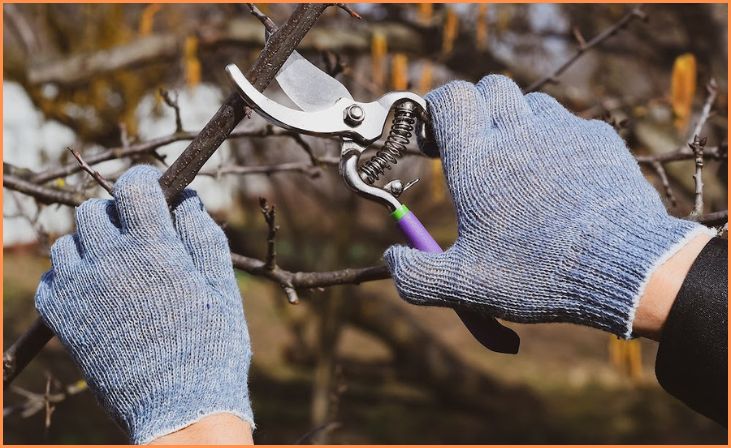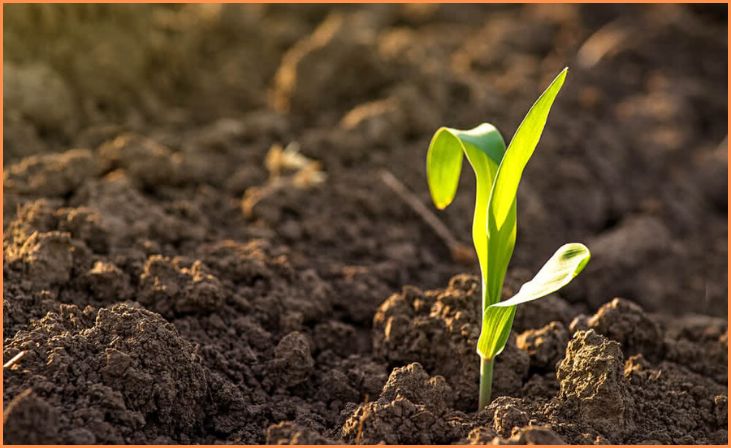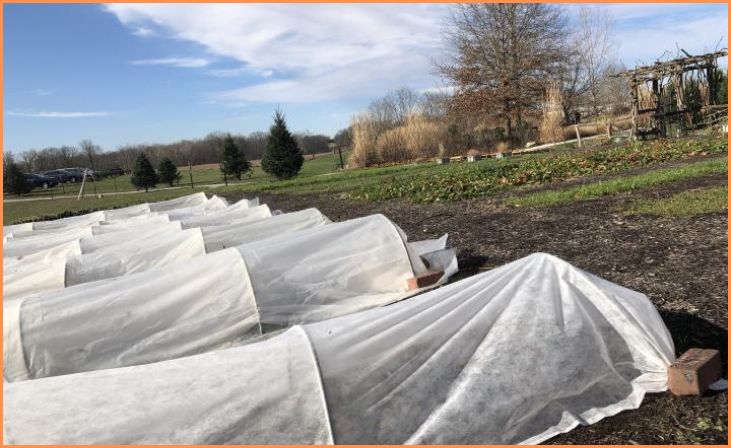At the onset of the new year, gardeners find themselves at a crucial juncture, where the groundwork they lay becomes instrumental in cultivating a garden that flourishes throughout the seasons. This comprehensive guide serves as a beacon, shedding light on “The Eight Gardening Tasks You Should Complete In January.” Here, we embark on a journey that goes beyond the ordinary, offering not just guidance but a wealth of valuable insights and expert advice. The objective is clear: to guarantee that your garden not only survives but thrives, becoming a haven of beauty and productivity.
The Eight Gardening Tasks You Should Complete In January
1. Winter Pruning:

Winter pruning is a crucial task to enhance the health and shape of your garden. Remove dead or diseased branches from trees and shrubs, as this eliminates potential sources of infection and promotes overall plant vitality. Focus on deciduous trees and shrubs during their dormant phase, as they are less stressed by the pruning process. Trim back overgrown branches to maintain a balanced canopy and improve sunlight penetration. Proper pruning also encourages the development of strong, well-spaced branches.
For More- 8 DIY Ideas for Creating an Urban Garden
2. Soil Preparation:
January offers an excellent opportunity to assess and improve soil quality. Begin by testing the soil pH and nutrient levels. If necessary, amend the soil with organic matter like well-rotted compost or aged manure. Turning over the soil is essential to break up compacted areas, enhance aeration, and facilitate water drainage. This ensures that plant roots have access to oxygen and nutrients. Adequately prepared soil provides a fertile foundation for your plants, setting the stage for healthy growth throughout the year.
3. Planning for the Year:
Take some time in January to outline your gardening goals for the upcoming year. Consider factors such as the types of plants you want to cultivate, any landscaping changes, or new additions to your garden. Planning your planting schedule helps organize tasks and ensures a well-structured garden. Break down your goals into manageable tasks and set a realistic timeline for completion. This proactive approach allows you to anticipate challenges and make informed decisions as the gardening season progresses.
4. Seed Selection and Starting:

Selecting and ordering seeds early in the year ensures you have ample time to acquire specific varieties and plan your garden layout. Consider factors such as sunlight requirements, soil conditions, and plant compatibility when choosing seeds. For plants that benefit from an early start, initiate seed starting indoors. This includes vegetables like tomatoes and peppers. Use seed trays or pots with a quality seed-starting mix, providing the optimal conditions for germination. Keep track of the germination timeline to transplant seedlings into the garden at the appropriate time.
5. Garden Tool Maintenance:
Proper maintenance of garden tools is often overlooked but is essential for their longevity and functionality. Begin by cleaning tools to remove dirt, sap, and other residues. For cutting tools, such as pruners and shears, sharpen the blades using a file or sharpening stone. Inspect handles for any signs of damage and repair or replace as needed. Lubricate moving parts, such as hinges and springs, to prevent rust and ensure smooth operation. Well-maintained tools not only make gardening tasks more efficient but also reduce the risk of spreading diseases between plants.
6. Compost Management:
Turning the compost pile in January aids in the decomposition process and accelerates the production of nutrient-rich compost. Mixing the materials introduces oxygen, which is crucial for the activity of beneficial microorganisms responsible for breaking down organic matter. Use finished compost to amend the soil in your garden beds. The addition of compost improves soil structure, water retention, and nutrient content. As a sustainable practice, composting also reduces the amount of organic waste sent to landfills, contributing to a healthier environment.
7. Pest and Disease Prevention:
Vigilance in inspecting plants for signs of pests or diseases is key to preventing and managing issues early on. Look for abnormal growth, discoloration, or pest presence on leaves and stems. If detected, consider natural remedies like neem oil, insecticidal soap, or beneficial insects to control pests. Prune and dispose of affected plant parts to prevent the spread of diseases. Additionally, practicing good garden hygiene, such as removing debris and fallen leaves, reduces hiding places for pests and minimizes the risk of fungal infections.
8. Cold Protection:

Protecting cold-sensitive plants during frosty nights is essential to prevent damage to tender foliage and young growth. Cover plants with frost blankets, row covers, or even old bedsheets to provide insulation. Mulching around the base of plants helps retain soil warmth and insulate the root zone. Use a layer of organic mulch, such as straw or wood chips, to create a protective barrier against temperature extremes. Be mindful of weather forecasts and take preventive measures when frost is predicted. Cold protection measures are especially crucial for recently planted or vulnerable plants, ensuring their survival during winter conditions and promoting a healthy start to the growing season.
For More- Essential Garden Tools for the Beginner
Conclusion
In conclusion, embarking on “The Eight Gardening Tasks You Should Complete In January” is not just a routine but a commitment to the well-being of your garden. By diligently following these steps, from assessing potential winter damage to meticulous planning for the spring, you are fostering an environment where your plants can thrive. As you navigate through January, remember the symbiotic relationship between you, the gardener, and your green companions. Your dedication to these tasks ensures a bountiful year and a garden that is a testament to your expertise and care. May your journey through the gardening seasons be filled with joy, success, and nature’s vibrant beauty.
FAQs
Regularly inspect your garden throughout January, paying close attention to changes in weather. Frequent checks allow you to detect and address potential issues promptly, safeguarding your garden against the adverse effects of winter conditions.
While you have flexibility in choosing compost, it’s advisable to opt for a well-balanced mix of green and brown materials. This combination ensures a rich source of nutrients, fostering optimal soil enrichment and supporting the overall health of your plants.






